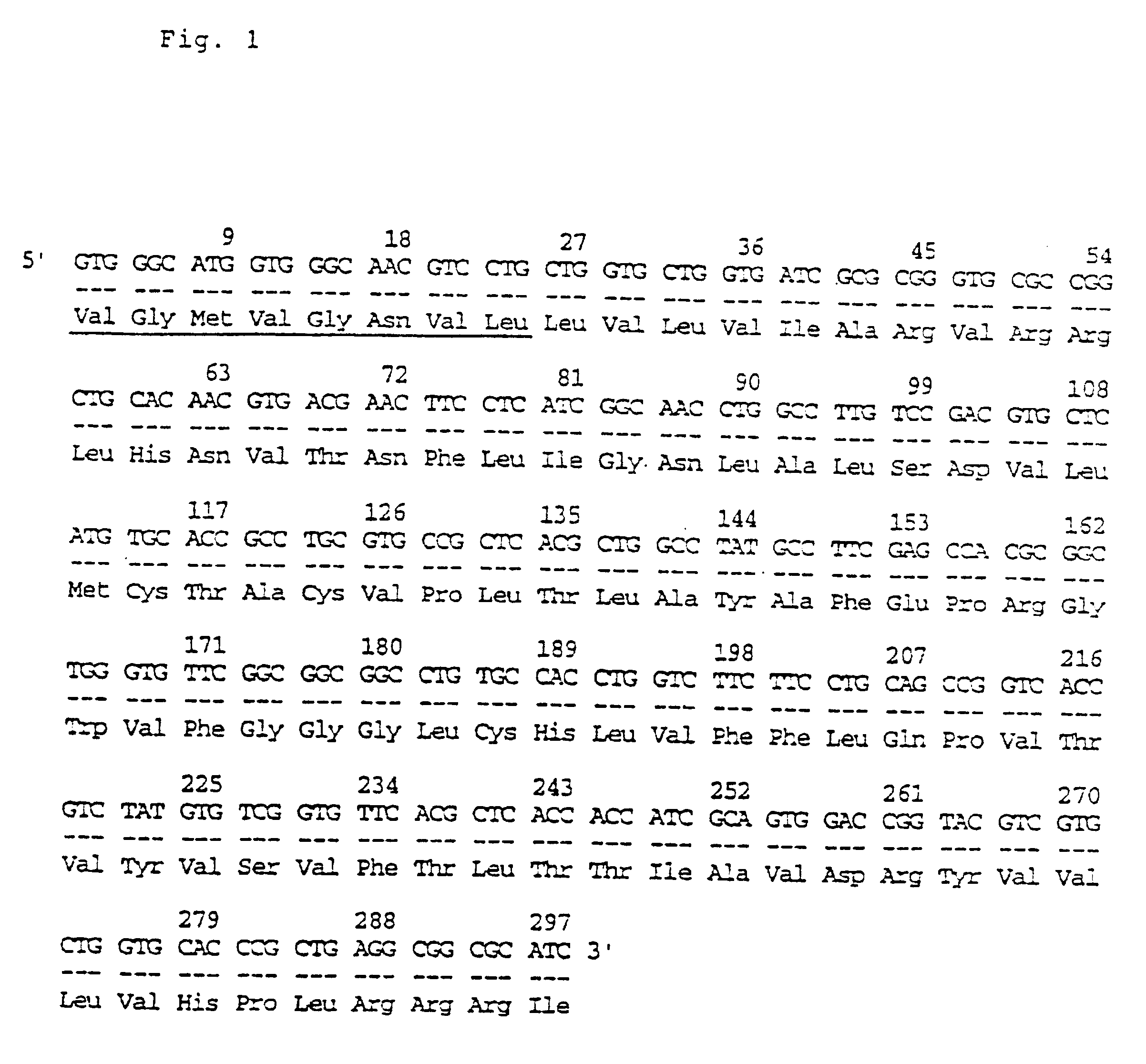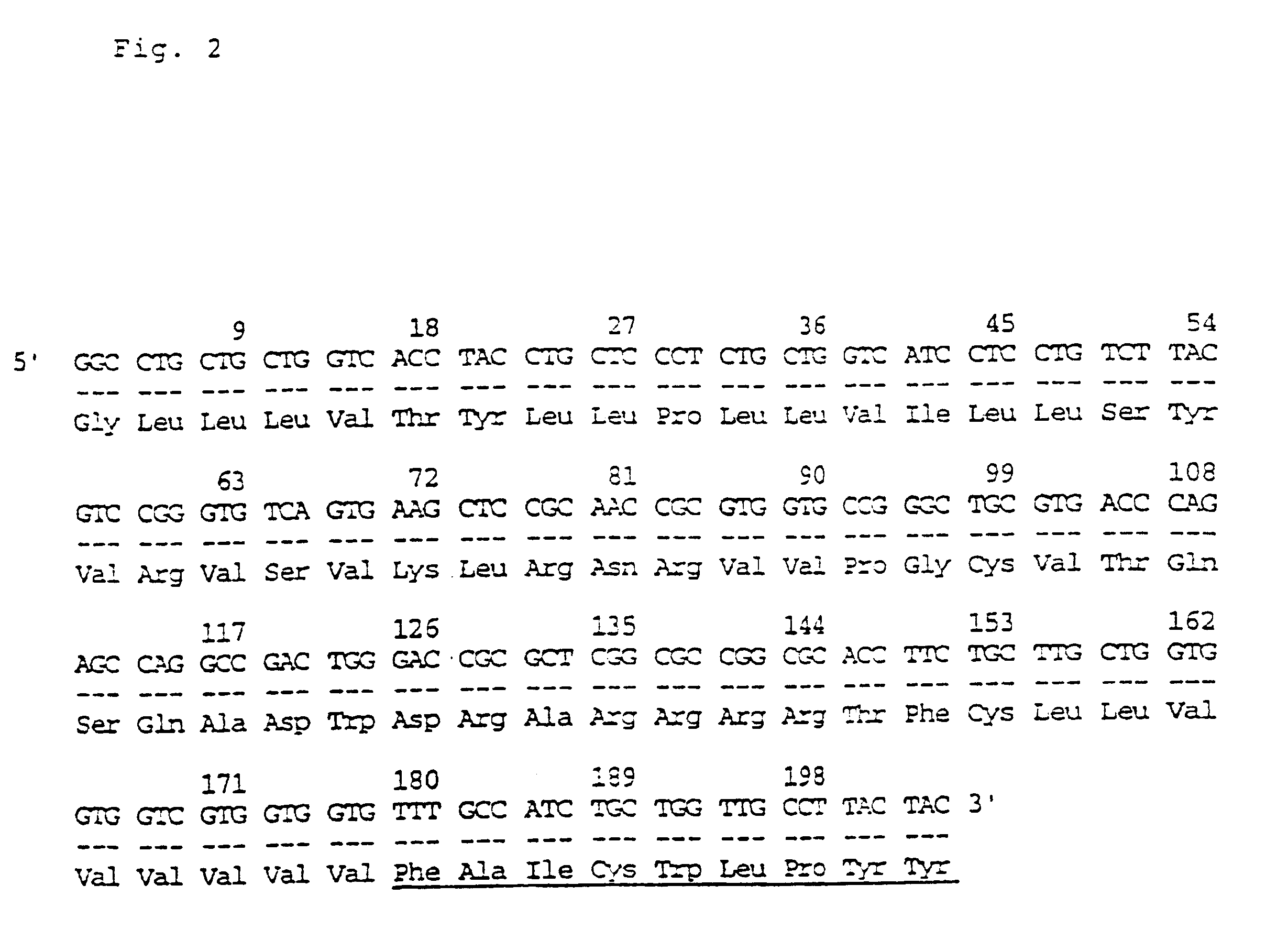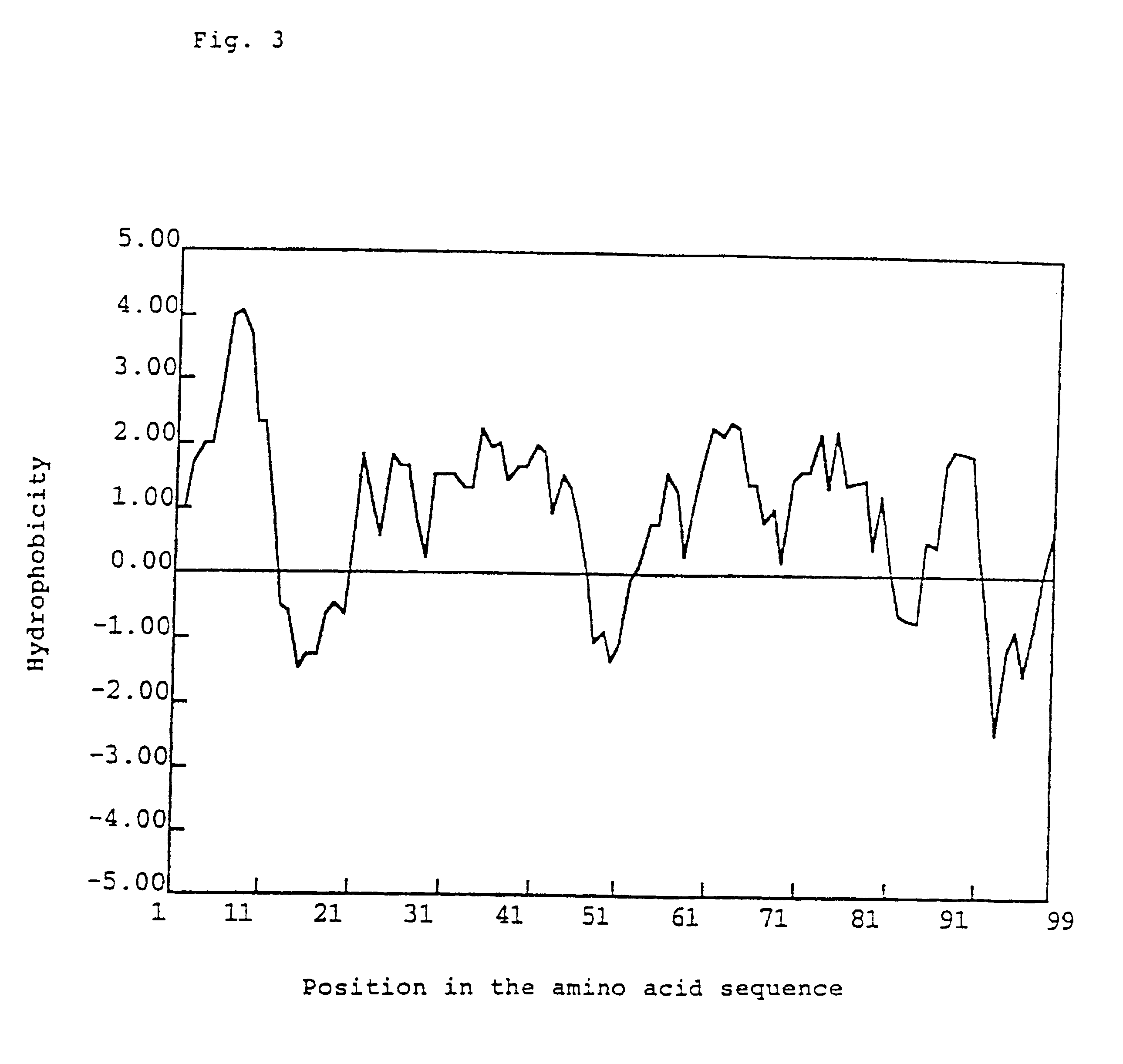Polypeptides their production and use
a technology of polypeptides and peptides, applied in the field of polypeptides their production and use, can solve the problems of difficult prediction of its ligand, inability to explain its structure and function, etc., and achieve the effect of low toxicity
- Summary
- Abstract
- Description
- Claims
- Application Information
AI Technical Summary
Benefits of technology
Problems solved by technology
Method used
Image
Examples
reference example 1
Preparation of Synthetic DNA Primer for Amplifying DNA Coding for G Protein-coupled Receptor Protein
A comparison of deoxyribonucleotide sequences coding for the known amino acid sequences corresponding to or near the first membrane-spanning domain each of human-derived TRH receptor protein (HTRHR), human-derived RANTES receptor protein (L10918, HUMRANTES), human Burkitt's lymphoma-derived unknown ligand receptor protein (X68149, HSBLR1A), human-derived somatostatin receptor protein (L14856, HUMSOMAT), rat-derived .mu.-opioid receptor protein (U02083, RNU02083), rat-derived .kappa.-opioid receptor protein (U00442, U00442), human-derived neuromedin B receptor protein (M73482, HUMNMBR), human-derived muscarinic acetylcholine receptor protein (X15266, HSHM4), rat-derived adrenaline .alpha..sub.1 B receptor protein (L08609, RATAADRE01), human-derived somatostatin 3 receptor protein (M96738, HUMSSTR3X), human-derived C.sub.5 a receptor protein (HUMC5AAR), human-derived unknown ligand rece...
example 1
Amplification of Receptor cDNA by PCR Using Human Pituitary Gland-Derived cDNA
By using human pituitary gland-derived cDNA (QuickClone, CLONTECH Laboratories, Inc.) as a template, PCR amplification using the DNA primers synthesized in Reference Example 1 was carried out. The composition of the reaction solution consisted of the synthetic DNA primers (SEQ: 5' primer sequence and 3' primer sequence) each in an amount of 1 .mu.M, 1 ng of the template cDNA, 0.25 mM dNTPs, 1 .mu.l of Taq DNA polymerase and a buffer attached to the enzyme kit, and the total amount of the reaction solution was made to be 100 .mu.l. The cycle for amplification including 95.degree. C. for 1 min., 55.degree. C. for 1 min. and 72.degree. C. for 1 min. was repeated 30 times by using a Thermal Cycler (Perkin-Elmer Co.). Prior to adding Taq DNA polymerase, the remaining reaction solution was mixed and was heated at 95.degree. C. for 5 minutes and at 65.degree. C. for 5 minutes. The amplified products were confirme...
example 2
Subcloning of PCR Product into Plasmid Vector and Selection of Novel Receptor Candidate Clone via Decoding Nucleotide Sequence of Inserted cDNA Region
The PCR products were separated by using a 0.8% low-melting temperature agarose gel, the band parts were excised from the gel with a razor blade, and were heat-melted, extracted with phenol and precipitated in ethanol to recover DNAs. According to the protocol attached to a TA Cloning Kit (Invitrogen Co.), the recovered DNAs were subcloned into the plasmid vector, pCR.TM.II (TM represents registered trademark). The recombinant vectors were introduced into E. coli INV.alpha.F' competent cells (Invitrogen Co.) to produce transformants. Then, transformant clones having a cDNA-inserted fragment were selected in an LB agar culture medium containing ampicillin and X-gal. Only transformant clones exhibiting white color were picked with a sterilized toothstick to obtain transformant Escherichia coli INV.alpha.F' / p19P2.
The individual clones wer...
PUM
 Login to View More
Login to View More Abstract
Description
Claims
Application Information
 Login to View More
Login to View More - R&D
- Intellectual Property
- Life Sciences
- Materials
- Tech Scout
- Unparalleled Data Quality
- Higher Quality Content
- 60% Fewer Hallucinations
Browse by: Latest US Patents, China's latest patents, Technical Efficacy Thesaurus, Application Domain, Technology Topic, Popular Technical Reports.
© 2025 PatSnap. All rights reserved.Legal|Privacy policy|Modern Slavery Act Transparency Statement|Sitemap|About US| Contact US: help@patsnap.com



